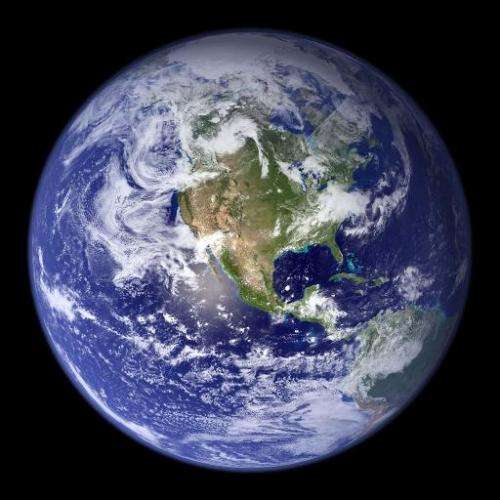This NASA handout image received 31 July 2007 shows the spectacular blue marble, the most detailed true-color image of the entire Earth to date
In under eight months, humanity has used up its yearly quota of replenishable Earth resources, according to a report published Tuesday by an environmental thinktank that monitors mankind's impact on the planet.
"August 19 is Earth Overshoot Day 2014, marking the date when humanity has exhausted nature's budget for the year," the Global Footprint Network said in a statement.
"For the rest of the year, we will maintain our ecological deficit... We will be operating in overshoot."
The organisation tracks humanity's demands on the planet against its ability to replenish resources like food and timber, and absorb waste like carbon dioxide from burning fuel for energy.
The cutoff point has been arriving earlier every year—in 1993 Earth Overshoot Day fell on October 21, in 2003 on September 22, and last year on August 20.
In 1961, the organisation said, humans used about three-quarters of the Earth's annual resource budget.
This changed by the early 1970s, when economic and population growth increased our footprint beyond what the planet could renew in a year.
"Today, 86 percent of the world population lives in countries that demand more from nature than their own ecosystems can renew," the network said.
It calculated that 1.5 Earths would be needed to produce the renewable resources needed to support current consumption.
This handout photo taken and released in 2010 shows Anglo-Australian mining giant BHP Billiton's Mount Newman iron ore mine in Western Australia
"Moderate population, energy and food projections suggest that humanity would require the biocapacity of three planets well before mid-century," the network warned.
"This may be physically unfeasible."
The costs of unsustainable consumption can be seen in deforestation, water scarcity, soil erosion, species loss and a buildup of planet-warming CO2 in the atmosphere that threatens human well-being and countries' economic stability, said the organisation.
© 2014 AFP

























